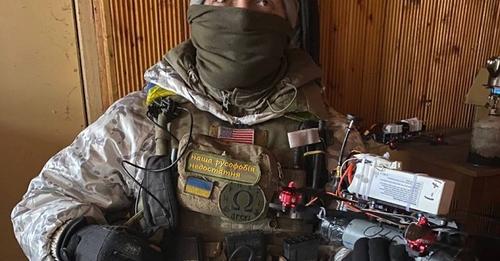Ukrainian strike drone manufacturers are supplying between 12 and 15 thousand FPV drones to the Defense Forces each month.
The head of “Eskadron” FPV drone production shared this in an interview with BusinessCensor.
“Eskadron” launched the production of drones in August 2022 with a batch of 20 drones. And in a year, in August 2023, the company reached the pace of 2,743 drones monthly. According to the plans, in December, their monthly amount will be increased to 4,000 units.
However, “Eskadron” holds only a part of the market. According to rough estimates, between 12 and 15 thousand FPV drones per month are transferred to the Defense Forces. And in the next quarter, their number could reach 30 thousand per month.
Speaking about the cost of drones, the manufacturer notes that it depends on the model and ranges between UAH 12 and 27 thousand.

Drone production
“Eskadron” started producing drones from scratch in 2022, but the company is not a large one. To scale up production, in addition to assembling drones from foreign components, they also order ready-made ones from China.
“We buy some of the semi-assembled drones in China. We install our own firmware and detonation initiation systems on ready-made drones. If there are vulnerable elements, we replace them. This allows us to diversify supplies and, basically, reduce assembly time,” the developer shared.
According to them, modified Chinese drones could be better than self-assembled Ukrainian ones. This is due to the availability of professional engineers, expensive soldering stations, technology, and experience at Chinese enterprises.
The scale of production of prefabricated and ready-made Chinese drones varies and depends on the uninterrupted supply of components. The ratio ranges from 50/50 to 70/30.

Development of drones
Most drones supplied to the military are simple and relatively cheap models. The most expensive drones, which cost $715 and can fly over 20 kilometers, go to the best operator units that are able to realize their potential.
“We started flying limited drones – with 2306 motors and a 7-inch frame. A huge result for us was when they first hit a tank at a distance of six kilometers. This happened during the liberation of Kherson. Now, six kilometers will not surprise anyone. No one flies so close, and all good targets are 15-20 kilometers away. We are now stepping towards more expensive drones,” says the interviewee.
Drones are constantly being modified with consideration of the changes on the battlefield. With the beginning of the offensive in the south, the Ukrainian military faced obstacles that forced changes in drones.
“We were flying calmly, playing with protocols and algorithms for keeping the drones on track, and then our counteroffensive began. The enemy deployed ‘swifts’, jammers, and so on. In some areas, we were losing 10 out of 10 drones. We switched to new frequencies and overcame the problem.
Then there was their counteroffensive on Avdiyivka, tanks with stationary jammers, and the fall of drones again, so we need to come up with something, and quickly,” says the company’s CEO.
He noted that to bypass enemy electronic countermeasures, Ukrainian manufacturers use various radio frequencies. One of the manufacturers generally developed its own radio communication system.
In the future, it is expected that the next generations of strike drones will be able to carry a more powerful warhead for a much longer distance. “Eskadron” is already developing one of these:
“Big, powerful, with a reserve. It carries 1.5 kg for a distance of up to 30 km or 4 kg for 12 km one way. These are the parameters of our most expensive drone for UAH 27 thousand. We already call it “Mammoth” among ourselves. It will become the drone of the future if we get clear government funding. We are currently working on the technical specifications, and we have already conducted combat tests.”

The company’s CEO hopes that next year, the Ministry of Defense will select top-10 manufacturers of FPV drones and will start contracting large batches of drones. This will increase production capacity and efficiency.
